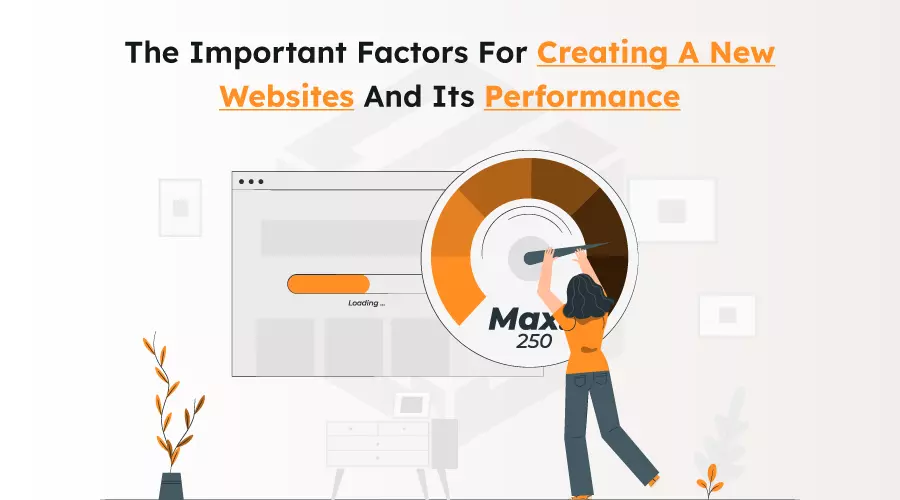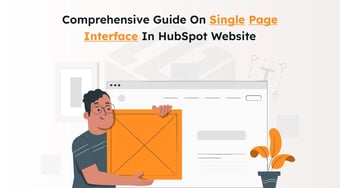The Important Factors For Creating A New Websites And Its Performance

Expanding your business growth depends on your website performance and other marketing strategies. A well-designed and developed website is crucial and one of the most important aspects for every online business because most of the business's growth factor depends on its website response.
For example, Amazon or Flipkart – both these eCommerce sites are worldwide famous. The ongoing craze of online shopping has reached the top level. Today, people don’t have time to go and purchase things. They simply find the easiest method to order online because they offer extra benefits such as free delivery, an easy return policy, festival discounts, and many more.
Imagine, if your eCommerce website is not working properly, will your customer trust you!? Of course not! They will leave you in the middle. It will lose your reputation, trust, and, most importantly, your customers. Your business will end up badly without growing.
Understanding the important basic factors before creating a website or webpage is essential. This article will describe all of them in detail and help you to make a responsive and well-managed website that will grow your business digitally. So, let’s dig in.
What Are The Important Factors To Improve Your WebPage Performance?
To improve your web page performance, you should consider the below things:
(i) Page Size
The general thumb rule of any page size is to keep around 100 kb or less. However, it depends on the niche. You can use the larger page size in some niches, such as eCommerce (150 kg to 200 kb). It is not uncommon because many product images are on the page.
Too large a page size could negatively impact the user’s experience. It can also miss the ranking boost opportunity with a good core website score. Web page size is important because it can help to rank your page on the search engines.
It can improve website loading speed. If your web page size is too large, then there are chances that you’ll need more bandwidth than the current web host plan. It can cost more to host your website.
(ii) Page Request
Visiting any page of your website sends lots of HTTP requests and directly impacts your web page loading. Generally, fewer HTTP requests mean your website is loading quickly. The loading speed of any website is very important to rank factors on search engines. According to backlinko, the average media web page loading speed is 1.65 seconds for every top 10 results on google. This highlights the importance of fast-loading webpages. If your web page loading time is less than two seconds, you will probably result at the top of the google search engine. There are plenty of ways you’ll find to reduce page requests for your webpage.
(iii) Page Speed
This is a measurement of how fast your content loads on your website. It can also describe either ‘page load time’ or ‘time to the first byte.’ Google has indicated website speed as one of the signals used by its algorithm to rank pages. It specifically measures time to the first byte when it considers page speed. Slow webpage speed can negatively affect your indexation and cause a high bounce rate and low average time on the page. Longer load time shows a negative impact on conversions. So, before moving forward, analyze your page speed with Google’s pageSpeed Insights.
(iv) Browser Caching
Browser caching is an important feature you should consider because it can improve page loading time and reduce browsing costs. Caching allows recent web pages to store in web browsers temporarily. It is a process that involves temporary resource storage in web browsers. Thus, when visitors visit your website afterward, the website will load more quickly, and it also reduces the bandwidth usage of the web page.
(v) Minimal Page Redirection
Many web developers make this mistake while creating a website. They use multiple redirects, which can slow your website speed. To make a high-speed loading website, you should remove various redirections. You can use only one redirect, not more than that. This improves your page speed. There are two different types of redirects: 301/308 redirect (which means it moved permanently to a different web address) and 302/307 redirects ( which means you have moved the web page temporarily to another web address). The other 303 redirects indicate that the redirects don’t link to a new upload but to another page. It is mostly used to prevent the form’s content from resubmitting when users hit the browser back button.
(vi) Image Size
It is essential to understand the thumb rules of using different images for your website. The optimal file size for large images or full-screen background images should be more than 1 MB. For any small web page graphics, it should be 300 kb or less. Uploading large-size images on your website may cause huge performance issues. Thus, uploading high-resolution images to your site is not recommended. A larger image takes a long time to load your webpage. So, to make a responsive and quick-loading website, you should use smaller images, or you can use compressed images for the web page. It is advisable to use responsive images or SVGs to optimize images for different screen sizes. You must consider all of the above factors to improve your web page performance. If you want your website to rank well on search engines, you should make SEO-friendly websites. Let’s check out more details.
How To Make SEO-Friendly Websites?
Remember, any SEO-friendly website makes it easy for search engine crawlers to assess the website and get a good understanding of its content and structure. Here are the most important characteristics you should follow to make an SEO-friendly website.
(i) Unique Title And Proper Meta Description
The meta title range is between 50 to 60 characters, whereas the META description range is up to 155 to 160 characters. Both are crucial for any search engine indexing as they precisely declare the details about the webpage to the visitors.
(ii) Short & Clean URL Structure
To follow the best practices for search engine indexing, you must use a short and clean URL structure. Try to use lower-case, descriptive, organic keywords separated by dash URLs for more visibility.
(iii) Quick loading
Your SEO loading website should be fast loading. You need to improve your website speed to pass your SEO audit. Using a lot of factors, you can increase your page speed, such as image optimization, reduced page size, browser caching, and many more.
(iv) Unique & User Friendly Content
It will frustrate you if you have written one line with complex words and you need to google it every time to find the meaning of those words. So, when it comes to web content, you should use unique and user-friendly content. Plagiarized web content can reduce the SEO-friendliness of your website. You should also use a proper content structure with Header tags (H1, H2, H3..)
(v) Responsive Website
Make sure to create your website to be responsive on any device they are visited on. You must fix any discrepancies if any of your web pages are not responsive on any type of device. Do testing of all your webpage on different devices to ensure your site is completely responsive.
(vi) Internal linking
It will create a well-rounded map of your website. It helps search engine crawlers to associate relevant web pages together. It can also create a strong internal architecture to enhance the SEO-friendly performance of your website.
(vii) Descriptive Link Text
Remember, every link of your website makes sense because all descriptive link text helps your visitors to know what they will see in the link if they click on the link.
(viii) Permission To Index
To appear on any search engine's results, you must have permission to store them in their index. Search engines like Google do not directly index your website; for that, you have to follow their process. Indexing is a must for any website to appear on search engines.
Is Your Website Mobile Friendly?
If you see any website performance on google analytics or other tools, you will find that most of the web page traffic comes from the mobile device. I can say mobile devices are the fastest growing factor. So, to improve your business growth, you should optimize your website for mobile. If you don’t do so, you will miss valuable traffic, revenue, and leads.
To create any mobile-friendly site, you should consider these points:
- Use legal font size
- Use interactive elements (like buttons)
- Responsive mobile-friendly design or layout
- Update content carefully
- Test the web page on a mobile device before making it live
- Declutter your web design
- Choose a mobile responsive theme
With all the above factors, website security is also important. Let’s get the details on it.
What Are Steps I Should Follow To Improve My Website Security?
Generally, website security is equipped with an SSL certificate. It is free from the vulnerability of online standards. Many people and search engines love to secure their websites. There is no guaranteed method to keep your website hacker-free forever. So, an expert always advises being safe rather than sorry.
To improve your website security, you should:
- Add HTTPs and SSL certificate
- Keep your plugin and software up to date
- Use a secure web host
- Choose smart password
- Change your CMS default setting
- Record user access
- Backup your website
- Tighten network security
Many people are unaware of HTTPs. It stands for Hypertext Transfer Protocol Secure. It is the most effective and well-known protocol that provides security over the internet. It also prevents interruptions and interceptions from occurring while content is transiting. This protects websites from attacks and gives visitors confidence that your website is trustworthy and authentic.
It is also advisable to secure your JAVASCRIPT Libraries to protect your website. If you use the latest version of your library and update it regularly, it will keep your website completely safe.
Once you are done with web development, you have to check its performance with different SEO tools such as website.grader, SEOChecker and many more. So that you can improve your errors and make a more responsive website.


